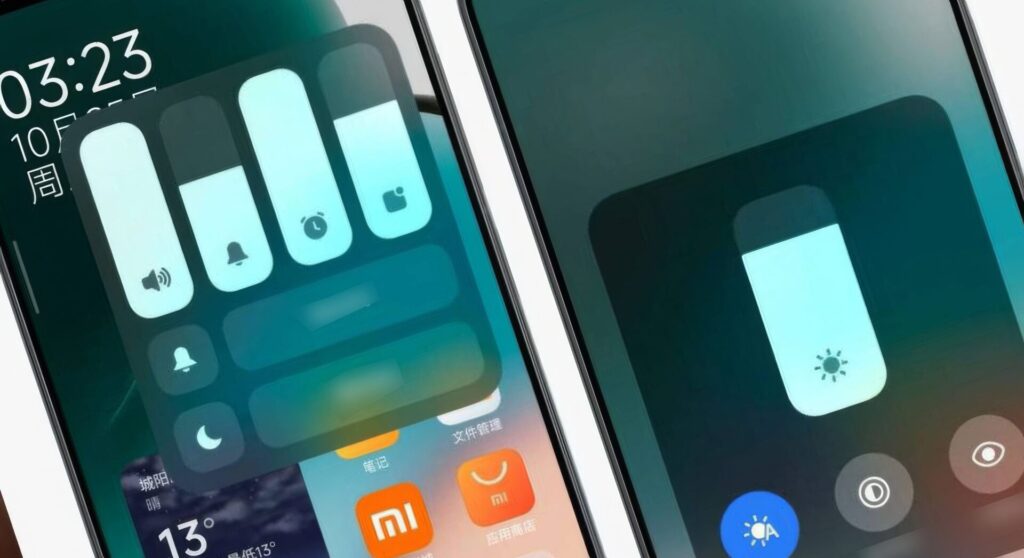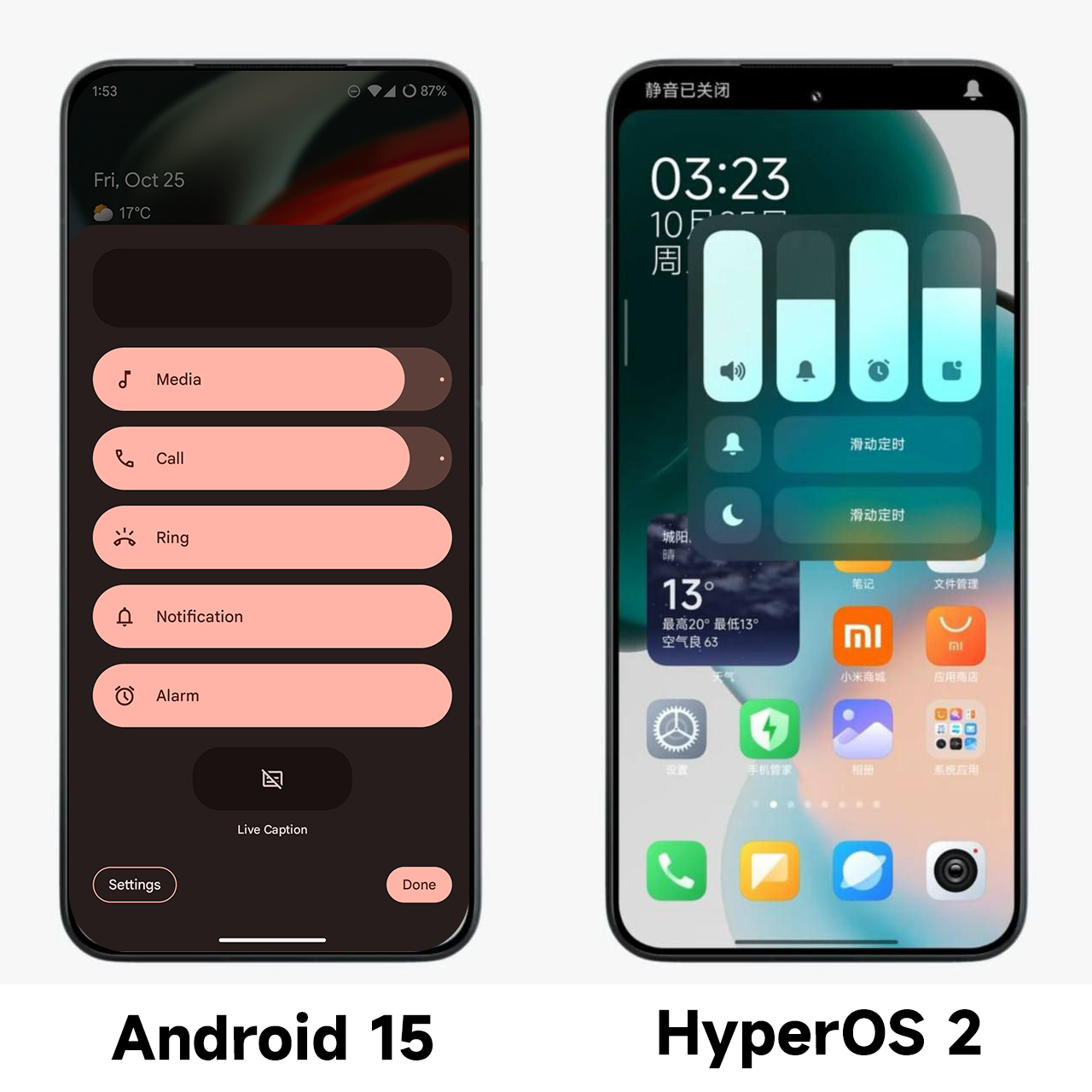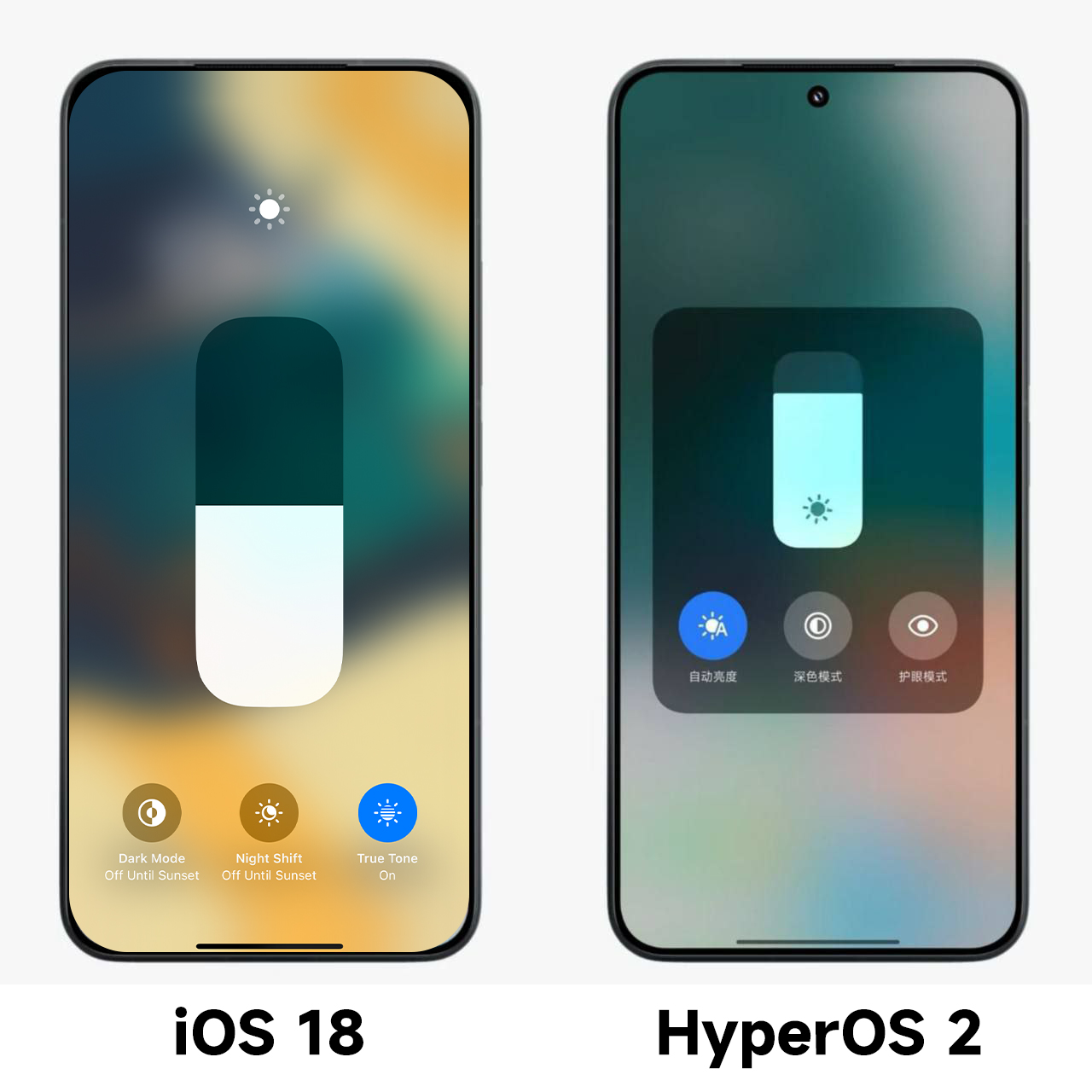Xiaomi has brought a host of changes with its next-generation OS, the HyperOS 2, expected to launch with the Xiaomi 15 series. The more obvious changes in design include a sound panel and screen for adjusting brightness, which give users a fresh look with added value.
Android 15-Inspired Sound Panel Redesign
One of the main changes in HyperOS 2 is indeed a redesigned sound panel. This design is definitely taken from the stock Android 15 style: it is minimalist, functional, and rather nice. There are more options to control on the sound panel, and adjusting media, call, notification, and system sounds volumes can be much easier.
While previous versions of Xiaomi’s MIUI relied on its own unique visual identity, the sound panel in HyperOS 2 now embodies a more universal design language. This makes it an interface that is cleaner and less cluttered, faster to access for functions related to volume, and with colors that blur and integrate with that appealingly alive look so characteristic of Xiaomi’s design language.
Brightness Adjustment Screen Mirrors iOS 18
The sound panel takes design cues from Android 15, while the screen for adjusting brightness in HyperOS 2 takes a cue from iOS 18. Xiaomi has implemented something quite similar, with a now-streamlined interface that looks just like the latest Apple control center. Screen brightness sits right in the middle of the screen slider, supplemented by a nice gradient effect and high-end blur visual cues giving the UI a really nice feel.
These improvements also extend to the brightness adjustment screen, making it easier to use. You can tell the difference in both aesthetics and fluidity of the interface more vividly yet practical and efficient at the same time.
Aesthetic Evolution in HyperOS 2
These are only a few of the updates included with sound and brightness panels that form part of a greater aesthetic evolution happening with HyperOS 2. Xiaomi has revealed that the look is slick and modern, taking in the best bits from other systems while retaining its characteristic trait. From the functional simplicity of Android 15 through to the fluidity and visual finesse of iOS 18, this merged design philosophy will yield a user interface that’ll be familiar but undeniably Xiaomi.
HyperOS 2 promises a much more refined experience with more features, besides visual updates that include improved multitasking animations and redesigned system apps for a smoother launcher experience. When the system releases officially with the Xiaomi 15 series, users will try out these changes for themselves.
Video Previews and More
For those who cannot wait for a glimpse of the updates, including how the new animations for opening apps and other interface features like it work, Xiaomi has shared video demonstrations of HyperOS 2 in action. These videos allow users to visualize the enhancements and understand how the new UI feels before actually diving into the full experience.


 Emir Bardakçı
Emir Bardakçı




Why is the HyperOS update will come to Redmi 13c in the early December 2024th?
I’m so exited to have an HyperOS 2.0 update on my Redmi 13c
Readme 13 c control centre probablem how to change control centre
pro